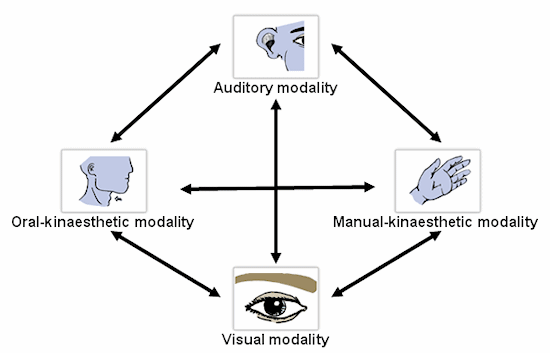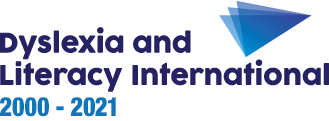The case for phonic methods
For decades there have been controversies about methods for teaching literacy between those favouring the ‘global’ method on the one hand and those favouring the ‘phonic’ or analytic on the other.
Plentiful scientific research and review reports looking at the effectiveness of various methods have shown that phonic methods which combine:
- – the explicit teaching of phonemic awareness
- – and the teaching of the alphabetic principle, through the systematic teaching of the grapheme-phoneme correspondences
are by far the best way to learn to read and spell for children with dyslexia but also the best way for all children in the early stages of learning.
National Reading Panel – NICHHD, US – Ehri et al.
Rose report – UK – Jim Rose
INSERM report (seventh publication) – France – Ramus et al.
If you want to know more about the reasons why phonic methods are better than global methods:
You may think that teaching the grapheme-phoneme relations detracts from the aim of reading, i.e. to get to the sense. On the contrary, it is the best means of achieving this goal.
So, for example, the Dyslexia Institute Learning Program from Dyslexia Action, UK, suggests starting by teaching the following correspondences:
< t > ↔ [ t ]
< i > ↔ [ i ]
< p > ↔ [ p ]
< n > ↔ [ n ]
< s > ↔ [ s ]
With just these five graphemes the child can make lots of words:
< tin >
< tint >
< pins >
< sit > …
With a little creativity, phrases are possible that make sense:
< nits in tins >
< pins nip >
< sit in it > …
Add just one grapheme, < a >, and sentences are possible:
< an ant naps in a tin >
< an ant sits in a pan >
< Pat’s pants nip >
< it snaps! >
< a nit pats an ant >
< an ant sips sap >
< it is a pit in a pan >…
The case for multisensory approaches
Children with dyslexia have problems in building representations of the ‘sounds’ of spoken words, i.e. phonemes, and then linking these to the ‘letters’, i.e. graphemes, of written words. This makes it very hard to learn to read and spell.
In the 1930’s Dr Samuel Orton in the USA noticed that learners with dyslexia had problems in reading and writing when taught by ‘traditional’ methods. Working on the premise that some cerebral connections, notably those between the visual and auditory areas, could be less strong in these learners, he looked for a system of teaching which would use other associative areas of the brain to link the visual and auditory areas. He asked Anna Gillingham and a team of experienced teachers to devise a new way of teaching phonics to learners with dyslexia.
Multisensory techniques for teaching literacy, now called the Orton-Gillingham method, arose from this approach.
Multisensory methods have proved to be the most effective for children with dyslexia and, at the same time, benefit all children learning to read.
What are multisensory methods?
The techniques set up a strict and simultaneous association between what learners with dyslexia:
 see in front of them, the visual modality
see in front of them, the visual modality
 what they hear, the auditory modality
what they hear, the auditory modality

what they feel around their throat and mouth when they speak out loud, the oral-kinaesthetic modality

what they feel in their hand when they write each grapheme and word, the manual-kinaesthetic modality which includes the memory of the movements the muscles make
When teaching children with dyslexia, you should try to involve these four modalities as often as possible, across all domains.
These connections improve memory and awareness.

Here Steve Chinn, an expert in learning difficulties and former head of a specialized school, speaks about multisensory teaching:
Here is a film, originally in French but dubbed and adapted into English, produced to accompany this course, including numerous examples of multisensorial teaching techniques:
Characteristics of multisensory methods
- Structured and sequential: introducing the simple and frequent before moving to the complex and less common, for example, ‘t’ and ‘s’ before ‘oi’ and ‘ow’.
- Cumulative: each new teaching point builds on the one taught before.
Based on phonological analysis: the learner must acquire a thorough awareness of the phonological units: syllable, onset/ rime, and phoneme.
The learner must be able to break down spoken words into smaller units if they are to make the links between graphemes and phonemes.
- Thorough: each step must be thoroughly mastered before going to the next step. This insistence on ‘overlearning’, which we will come to later, is important in teaching children with dyslexia.
- Memory-training: multisensory methods help boost memory and recall. Concrete memory aids should be used such as reading cards, mind-mapping cards and mnemonics.
Metacognitive: the teacher must encourage the learners to think about the way they learn.
The pupils should be made aware of how to link new concepts with what they have learned before and then learn how to approach a new task, building on what they have already learned.
Pupils should be made aware of the importance of self-checking. For example, when reading a text, they should know that they have to stop now and then to ask themselves: ‘Have I understood this?’ ‘What question does this paragraph answer?’
- Diagnostic: teachers have to adapt the style and rhythm of their teaching in order to respond to the needs and capacities of the learner.
Steps to be followed in phonic multisensory methods
These are:
- You start by teaching phonological and phonemic awareness.
- Simultaneously, you teach the grapheme-phoneme relationships, starting with single letters, for example:
< b > ↔ [ b ]
then two letters, for example:
< ch > ↔ [ ch ]
< ai > ↔ [ â ]
then the more complicated, for example:
< squ > ↔ [ skw ]
< -adge > ↔ [ -idj ]
- Rules are built up with respect to positional constraints, for example:
[ â ] is usually spelled < -ai- > in the middle of words (< rain >)
and < -ay > at the end of words (< stay >)
- Regular spelling formations are taught, from the most frequent to the less frequent:
< a > for < acorn >
and
< ai > for < rain >
before
< ei > for < reign >
and
< -eigh > for < eight >
- Rules involving changes in spelling are taught, for example:
< hoping > → < hopping >
finally, you teach the common suffixes and prefixes:
< -ness >, < un- >, < re- >, < -ly >, …
these in particular help the child to segment long words:
[ un ]-[ reason ]-[ able ]
then the Greek and Latin elements are introduced:
< tele- >, < -ology >, < pre- >, < ex- >, …


